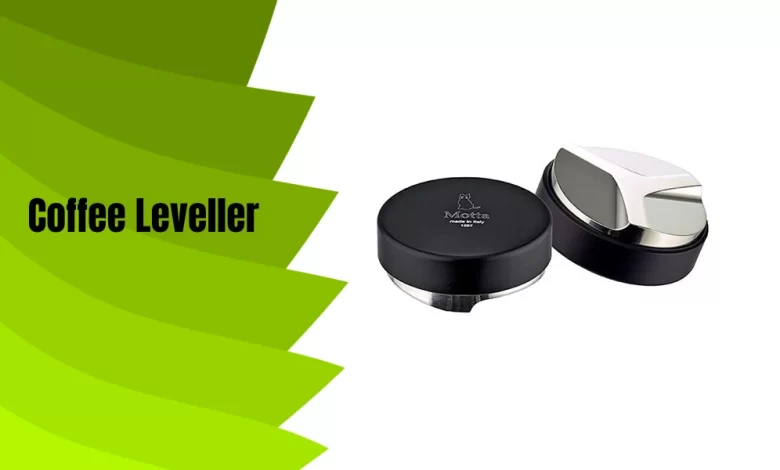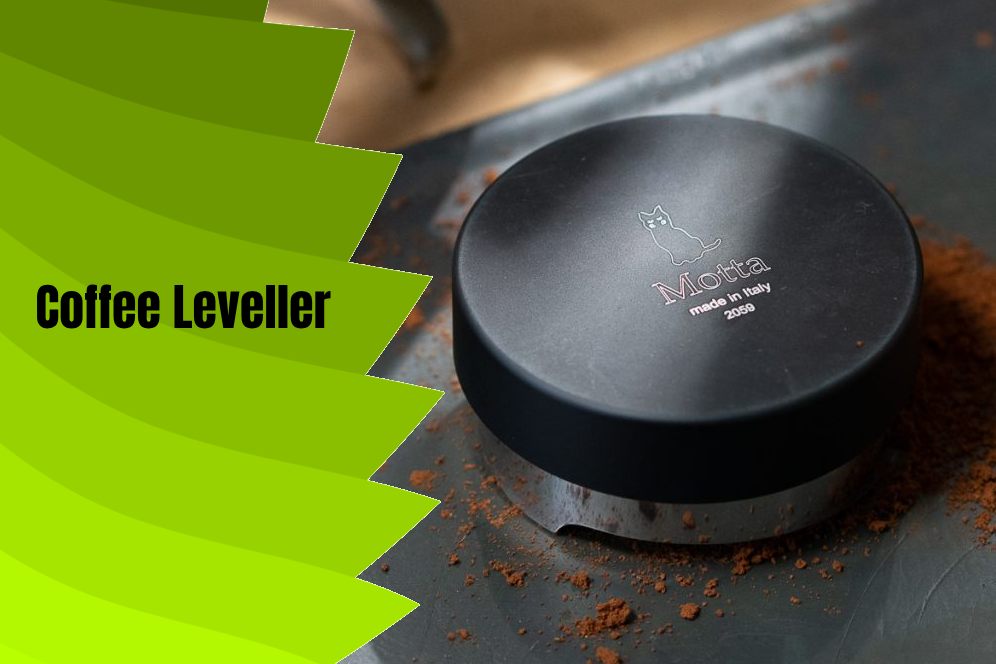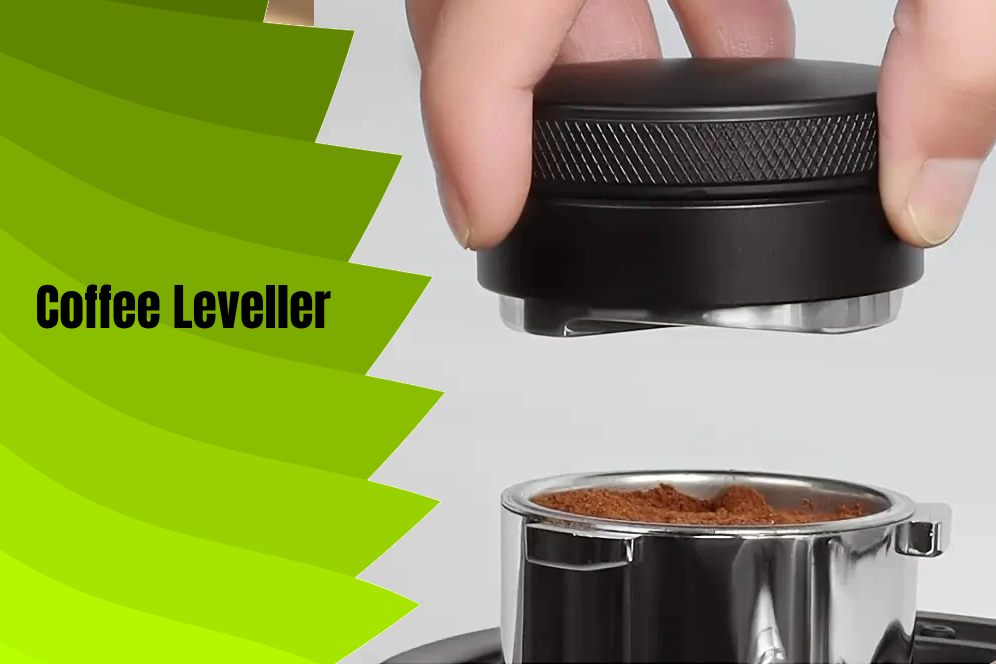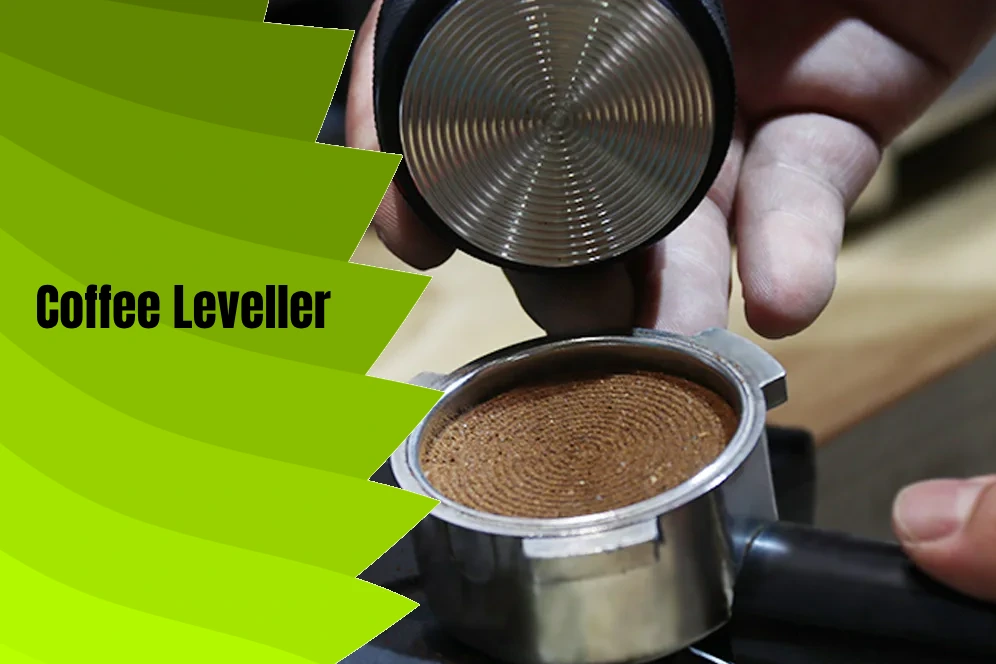How Do You Use Coffee Leveller?

Many factors affect the preparation of a high-quality espresso shot. The type of espresso machine, the type of coffee, the grind of the coffee, the contact between the coffee and hot water, etc. But one tool that has a significant impact on the taste and aroma of the coffee is the Leveller or coffee distributor.
on of coffee, the degree of interaction between coffee and water significantly affects the final taste and aroma of the coffee. When attaching a portafilter to an espresso machine, if the coffee is not properly ground and compacted, boiling water easily finds its way through the portafilter, having minimal contact with the coffee powder.
Another reason for using a coffee Leveller is that when coffee becomes wet, it expands in volume. Therefore, if there is not enough space for boiling water to enter the portafilter, as soon as the boiling water enters the portafilter under pressure, the coffee powder expands in volume and exits the portafilter.
Contents
Leveling and Tamping
Whether in the hospitality industry or private homes, it doesn’t matter if the amount and grind level of your coffee are perfectly balanced; espresso extraction may not be optimal. As you know, if we don’t mention the most crucial intermediate stage between coffee grinding, ground coffee, and espresso: proper tamping of the ground coffee. With the help of a leveler, you can significantly improve the uniformity of coffee grounds, making the tamping process easier.
This, in turn, reduces the risk of undesired channels, meaning the water is less likely to pass through the easiest path in the coffee, extracting undesirable flavors.
Precision Leveling Without Channeling
Ground coffee is compressed into the portafilter basket by a tamper.
So, how exactly can a leveling tool be used to achieve uniform grounds in the portafilter and, consequently, prevent the effects of channeling? With an ideally extracted espresso, water flows uniformly through the ground coffee, provided that the ground coffee is evenly distributed and compacted. If not, precisely what baristas warn about occurs: channeling.
Channeling essentially describes the phenomenon where water consistently chooses the path of least resistance through the ground coffee. In other words, it opens its way through channels present in the ground coffee, such as along the edges or through other uneven and loose areas. Consequently, aromatic compounds are significantly released from the coffee particles.
The term ‘channel’ originates from this. However, the result is often an espresso with a less appealing taste, lacking body, and overall having a smooth and mild flavor. Proper use of a coffee distributor can reduce the likelihood of channeling.
How to use a coffee Leveller
The process of using a Leveller is similar to using a tamper, and it involves smoothing the coffee surface with your finger without applying any pressure after pouring the ground coffee into the portafilter. Next, hold your arm at a ninety-degree angle and place your forearm vertically on the Leveller. Now, apply slight pressure to compact the coffee powder. Finally, move it slightly on the surface of the coffee powder to make it completely smooth.
The consistency and uniformity of the force applied to the coffee powder for compression directly impact the espresso’s concentration, and achieving the appropriate level of this force comes with practice and experience.
Leveling is done as follows:
- Grind your coffee beans as usual directly into your portafilter basket. This creates a mound of coffee grounds that is neither leveled nor evenly distributed. Gently tap the side of the portafilter with your hand to slightly compact the ground coffee. Then, use the palm of your hand or your finger to level and smooth the ground coffee in the portafilter.
- In the second step, the leveling tool is used to evenly distribute the ground coffee for complete coverage. Simply place the coffee distributor on the portafilter and rotate it 2-3 times clockwise. The raised elements or edges on the underside of the distributor evenly distribute the coffee powder, ensuring that channels within the ground material are filled and uniformly distributed. This way, you can achieve consistent results and prevent channeling. Additionally, practical tip: leveling tools can be adjusted based on the desired coffee dose. Whether you want to serve a single espresso (approximately 9 grams of ground coffee) in a single basket or a double espresso (approximately 18 grams of ground coffee) in a double basket, you can use a leveling tool for optimal distribution. The amount of ground coffee.
Our tip: When purchasing a leveling tool, make sure it is compatible with your portafilter model and sieves, as they may vary depending on the manufacturer. Therefore, it’s best to check the exact dimensions of your portafilter basket to find a suitable leveling tool.
Leveler vs. Tamper – What are the differences?
Ground coffee is tamped with a tamper. Tamping using a tamper is sometimes the most crucial step in preparing espresso. The ground coffee is pressed down by hand smoothly or into the portafilter. The tamper itself is typically made of stainless steel and has a flat base. The general rule is that the heavier the tamping, the better, to ensure that coffee grounds are pressed as uniformly as possible. Therefore, it’s crucial for coffee grounds to be evenly distributed, meaning they shouldn’t be denser on one side or angle than the other.
To achieve this uniformity before tamping, a leveling tool or pre-tamper is created. It is a very precise and innovative container designed to further optimize the espresso routine for maximizing the aroma.
Tamper vs. Leveler – Which is Better?
So, you’ve invested in a very expensive espresso machine and a coffee grinder that costs as much as a television, and now you have to worry about extracting too little or too much coffee. The learning curve at the beginning of your home barista journey is quite challenging, but the most important thing is to have a specific consistency in your espresso-making process. In fact, not only home baristas face this challenge, but especially hospitality establishments that often struggle with continuous staff turnover.
Even if the coffee is ground in the right amount and with the appropriate grind size, it doesn’t necessarily mean that the coffee machine produces a perfect brew. This is because there is a grinding action happening between the grinder and the machine itself.






